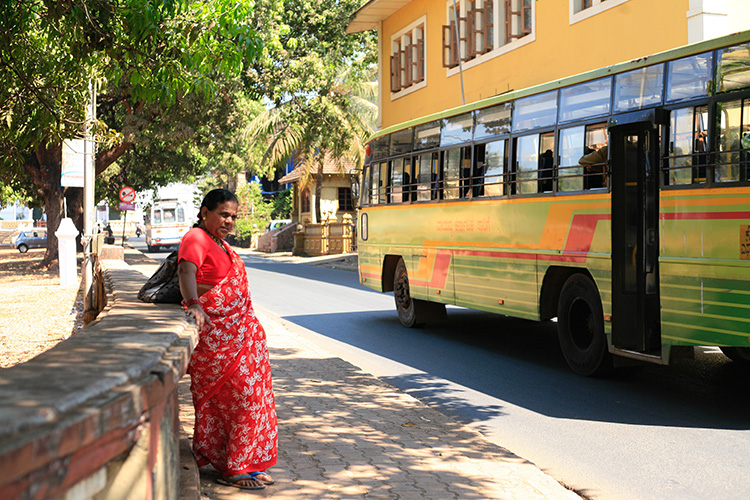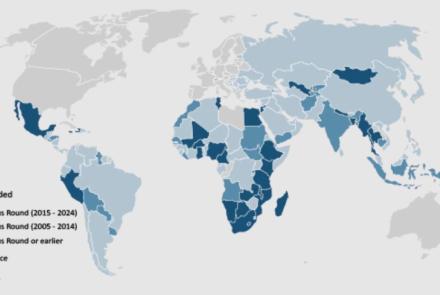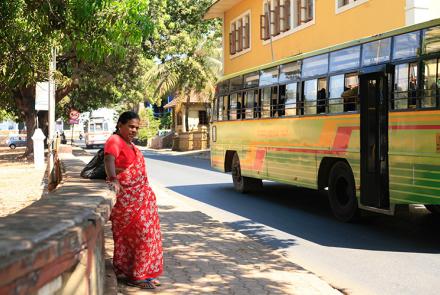TRANSPORTATION, GENDER NORMS, AND WOMEN'S EMPLOYMENT IN THE CONTEXT OF URBAN INDIA
By Arun Balachandran
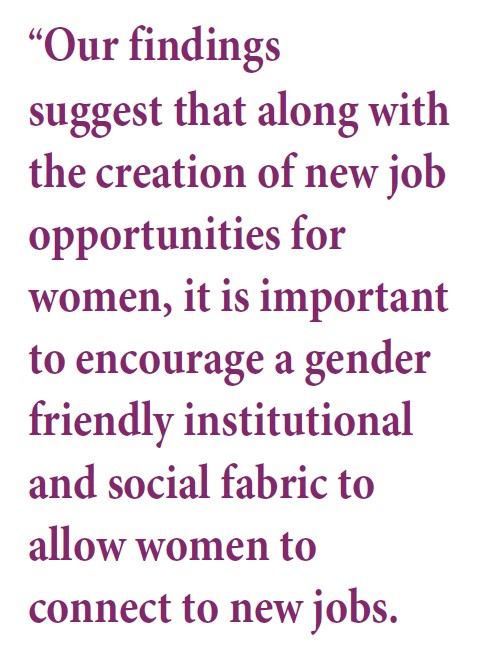
The female labor force participation (FLFP) in India is among the lowest in the world, along with considerably low female to male labor force participation rate (27.4%). The regional segregation in the FLFP is a significant characteristic of India’s labor market, with lower FLFP in urban areas than their rural counterparts. FLFP was 25.3% in rural India, against 15.5% in urban India (NSSO, 2012). Studies on women’s employment in India have often attributed it to individual demographic characteristics, education, labor market characteristics, labor policies and cultural constraints. Strategies for improving female labor force participation in India have focused on either labor market reforms or women’s empowerment (Das et al., 2015; Klasen & Pieters, 2015). From a policy perspective, the schemes to improve women’s labor force participation have been viewed from the perspective of the departments of labor and/or women’s welfare. However, sufficient attention has often not been paid on development policies that are often assumed to be gender-neutral, such as the transportation policies, in moulding FLFP.
Gender and transportation
It is surprising that the mediation role of transportation policies in FLFP rate in urban India is not sufficiently explored, because the literature has documented substantial gender differences in physical mobility patterns. Women have lower access to motorized transport and use slower modes of transport. Women spend more time to travel to paid work and usually travel lower distance than men. Compared to men, women are more likely to use public transport and often combine their work and family related travel (Peralta Quiros et al., 2014). Such differentials in mobility patterns by gender suggest that in the absence of a well-knit transport system, women must pay a surcharge or ‘pink-tax,’ in terms of time and/or money, to reach same destinations (World Bank, 2021a). An instance of ‘pink tax’ is when women must choose an expensive mode of transportation due to absence of security in the public transport system. These differential travel costs may reduce women’s access to economic activities.
At the same time, while improvements in urban transport infrastructure and services can improve workforce participation of women, it may be structured by the gender norms in the society. Better transportation may shrink the need for women’s paid work by increasing the income of other members of the household, and in turn decreasing women’s employment. This could be a counter-productive pathway in terms of links between transport and women’s labor. An increase in household income or income of other family members reduces the odds of working among women; and in turn women from lower economic households are more likely to participate in the labor force in urban India.
While some studies have examined the relationship between transportation and employment in rural areas (Lei et al., 2019), it is often assumed that transportation does not form a bottleneck in urban areas. However, this assumption is not justified in the context of urban India. Despite rapid economic growth and urbanization in the past decade, infrastructure growth is comparatively inadequate. Urban areas account for only 30% of India’s population, but 60% of the GDP. Moreover, it is projected that by 2030, urban India will contribute to 75% of GDP and will be the home for 600 million Indians (United Nations, 2015). However, only a handful of cities have mass rapid transportation systems and only 20 out of 87 cities with a population of 500,000 and above have organized transportation with a systematic transportation policy. The share of public transportation in cities with population above 4 million has declined between 1994 and 2007 from 69% to 38%, and congestion and inferior quality characterize most urban roads. Accidents and fatalities are among the highest in the world (World Bank, 2021b).
In our research, we explore if the association between better transportation systems in urban India and employment differs by gender, and further, how this association is affected by community-wide gender norms. A major handicap in understanding the mediation role of transportation is the absence of data on this topic in major large-scale datasets in India. We augment the nationally representative India Human Development Survey data, with the city level data on transport infrastructure. We find that an improvement in the size and quality of transportation infrastructure, particularly of public transportation, improves women’s labor market participation more than that of men. In communities with better gender relations, transport improved the women’s participation in labor and reduced the gender gap in employment; however, in communities with a higher gender bias as indicated by more frequently reported harassment of women, the impact of improvements in transportation on employment is weaker. Our findings suggest that along with the creation of new job opportunities for women, it is important to encourage a gender friendly institutional and social fabric to allow women to connect to new jobs. It is not just the policies specific to labor or to women, but more generally the economic development policies- such as infrastructural growth policy- need to have a gender-sensitive lens in their design.
References
Das, M. S., Jain-Chandra, M. S., Kochhar, M. K., & Kumar, N. (2015). Women workers in India: why so few among so many? International Monetary Fund.
Gijre, V., & Gupta, S. (2020). Urban Transport Governance Practice and Challenges in an Emerging Economy–Case Study of India. Transportation Research Procedia, 48, 2435–2445.
Klasen, S., & Pieters, J. (2015). What explains the stagnation of female labor force participation in urban India? The World Bank.
Lei, L., Desai, S., & Vanneman, R. (2019). The impact of transportation infrastructure on women’s employment in India. Feminist Economics, 25(4), 94–125.
Peralta Quiros, T., Mehndiratta, S., & Ochoa, C. (2014). Gender, travel and job access: Evidence from Buenos Aires. Banco Mundial.
Peters, D. (2001). Gender and transport in less developed countries: A background paper in preparation for CSD-9. London, Paper Commissioned by UNED Forum.
United Nations. (2015). World Population Prospects - Population Division - United Nations. World Population Prospects - 2015 Revision.
World Bank. (2021a). Closing the Gap: Gender, Transport, and Employment in Mumbai. World Bank.
World Bank. (2021b). Traffic Crash Injuries and Disabilities: The Burden on Indian Society. World Bank.
**Photo by Gabrielle Cepella on Unsplash
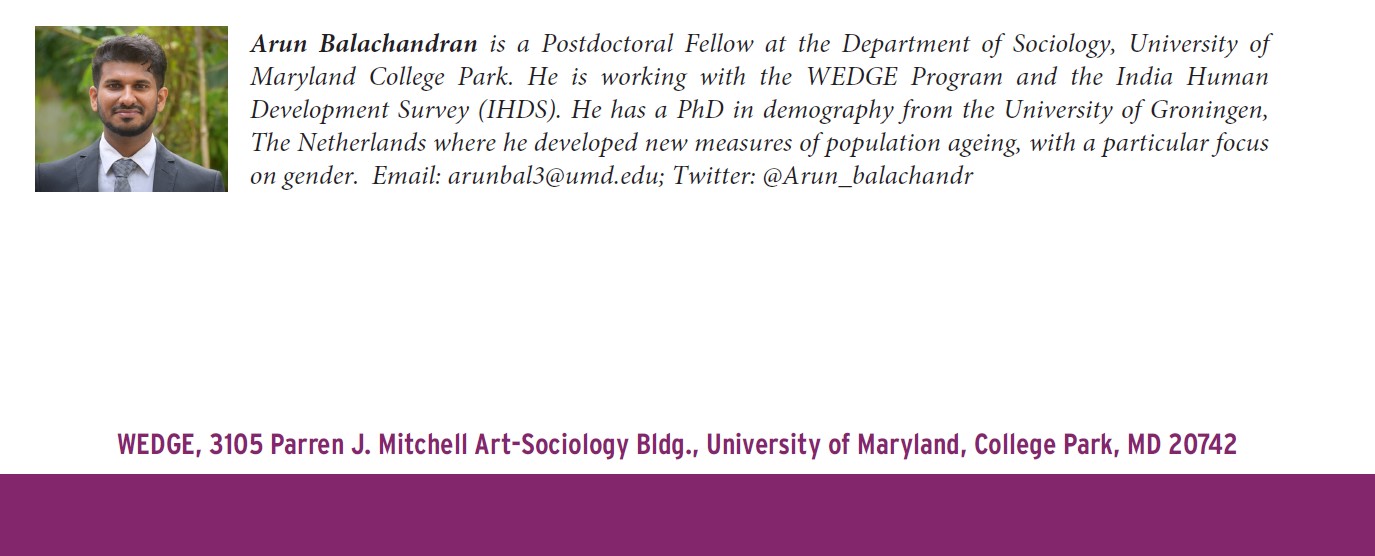
- Log in to post comments

